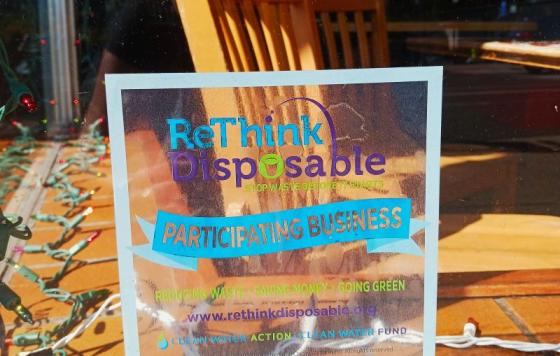
On September 21, the Maryland Department of the Environment held a public hearing to conclude a nearly two-year process to update air pollution regulations for municipal waste incinerators in Maryland: the BRESCO facility in Baltimore, and the Dickerson facility in Curtis Bay. While Dickerson's nitrogen oxides emissions are relatively low, BRESCO emits more nitrogen oxides per unit of energy generated than any of the state's coal plants - and has not reduced its emissions in the past decade, when the coal plants have either closed or significantly cut their emissions. The regulations the state has proposed would reduce emissions from BRESCO by 200 tons per year, still permitting 940 tons of nitrogen oxides to be emitted into Baltimore's air - a key component in creating smog and contributing to asthma, cardiovascular disease, and other negative health impacts. Nitrogen oxide emissions also contribute to nitrogen overload in the Chesapeake Bay and surrounding local waterways, harming drinking water quality and our local waterways. MDE has set up a process for writing much stricter air pollution regulations in the next two years - but that process has some loopholes. Read a technical analysis of this regulation by our allies at the Environmental Integrity Project and the Chesapeake Bay Foundation here (PDF).
Using whatever tools we can to reduce air pollution is important - but there's a bigger picture. Whatever controls for nitrogen oxides are installed on BRESCO, it will continue to release other pollutants, drain money from the state and the city, release greenhoues gasses, and enable a continued dependence on single-use products that drive resource extraction. A transition to Zero Waste - an ecosystem of policies aimed at reducing trash that must be burned or landfilled as close to zero as possible. A transition to zero waste in Baltimore would involve developing municipal composting, recycling and reuse businesses, alternatives to single-use disposable products, and other solutions that would create more local jobs. And so before the hearing, we rallied with our allies at United Workers, the Chesapeake Climate Action Network, the Chesapeake Bay Foundation, Interfaith Power and Light, the Baltimore Compost Collective, and more to demand not only cleaner air in Baltimore, but a transition to zero waste. Read more about the rally here.
After the rally, we marched from Carroll Park to the Maryland Department of the Environment, led by Rodette Jones, who lives in Curtis Bay and leads the Filbert Street Garden, home of the Baltimore Compost Collective.
We marched from Carroll Park to MDE to demand cleaner air & a just transition to #zerowaste! MDE's public hearing is beginning now. @unitedworkers @FreeYourVoiceUW @CCAN @EnviroIntegrity @chesapeakebay pic.twitter.com/Z5H2ykBt7K
— CleanWaterAction MD (@CleanWater_MD) September 21, 2018
At the hearing, community leaders, impacted residents, environmental experts, and faith leaders spoke out demanding cleaner air and a transition to zero waste. Some highlights:
Deborah Kleinmann of @sierraclubmd kicks off the hearing speaking of asthma rates in #Baltimore City schools: "In my eyes, this has got to stop." pic.twitter.com/z9IrgoQzj1
— CleanWaterAction MD (@CleanWater_MD) September 21, 2018
"As an anthropologist aligned with public health, I think that we all need to be in these conversations together and collectively come up with #zerowaste alternatives." Thank you @nikifab77 for encouraging MDE to follow the leadership of South #Baltimore! pic.twitter.com/OWG48x6xvP
— CleanWaterAction MD (@CleanWater_MD) September 21, 2018
Our MD canvass director Troiano Riviera speaks of his experience going door-to-door speaking about BRESCO & air pollution. "People really want to see effective changes for our region." pic.twitter.com/W9XI70vnFh
— CleanWaterAction MD (@CleanWater_MD) September 21, 2018
Greg Sawtell of @unitedworkers asks why Wheelabrator is spending time and money on a PR effort targeting his neighborhood of Curtis Bay. "We've engaged in this process in good faith." pic.twitter.com/C2Mk3j1S8s
— CleanWaterAction MD (@CleanWater_MD) September 21, 2018
Leah Kelly of @EnviroIntegrity: we are looking forward to participating in the process to create much stricter limits on BRESCO's nitrogen oxides emissions. pic.twitter.com/yYSoRDUc43
— CleanWaterAction MD (@CleanWater_MD) September 21, 2018
Taylor Smith-Hams of @CCAN: "in 2015, the BRESCO incinerator emitted roughly double the amount of greenhouse gases per megawatt hour of energy than each of the six largest coal plants in MD." pic.twitter.com/r4tMP5yJG8
— CleanWaterAction MD (@CleanWater_MD) September 21, 2018
Michael Coleman of @unitedworkers: "We really need to rethink what we're doing. There's a better way of dealing with energy. Trash incineration is not a good option." pic.twitter.com/LCCTJ4jbyy
— CleanWaterAction MD (@CleanWater_MD) September 21, 2018
Sabrina Thomas, a student at Towson University, notes that her school sends its waste to BRESCO: "I will not settle for this greenwashed solution for our waste issues that ultimately ends up sickening our communities." pic.twitter.com/Ke7liQ9P2r
— CleanWaterAction MD (@CleanWater_MD) September 21, 2018
Qeisha Greene of @unitedworkers: "My children have been hospitalized no less than three times in the last year and a half" due to asthma-related ailments. "Incineration is outdated and it causes more problems than positive results." pic.twitter.com/ooolMH3Xvr
— CleanWaterAction MD (@CleanWater_MD) September 21, 2018
Carmera Thomas of @chesapeakebay speaks about students in #Baltimore City schools. "Please do what is right for these children - especially the vulnerable ones." pic.twitter.com/JxMEuoo8AC
— CleanWaterAction MD (@CleanWater_MD) September 21, 2018
Heather Moyer of @IPLdmv: "Maryland's congregations are already leading the way on the transition to clean energy. It's time to follow their lead." pic.twitter.com/46jV3tL17o
— CleanWaterAction MD (@CleanWater_MD) September 21, 2018
We were glad to deliver our testimony (read it here!
The hearing is over - and BRESCO never spoke a word! But we were proud to deliver 154 petitions from our members demanding for a healthier future for #Baltimore & to call for a just transition to #zerowaste. Send your own comments to MDE by 5PM today: https://t.co/XpxpTXB2xB pic.twitter.com/9zjuSfl2AM
— CleanWaterAction MD (@CleanWater_MD) September 21, 2018


